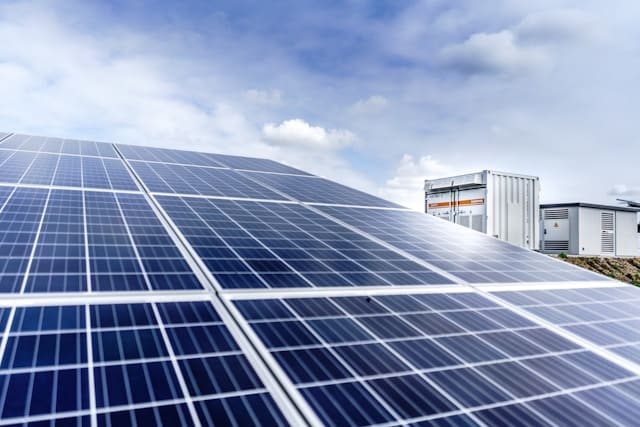What Are the Latest Advances in Smart Grid Technology for Energy Optimization?

We are living in an age where the integration of data and technology into our daily lives has become a norm. From our smartphones to our home appliances, the Internet of Things (IoT) has transformed our lives and how we use energy. But have you ever thought about how this digital transformation affects the larger scale of energy management? Let’s delve into the world of smart grids, the latest advancement in energy optimization.
Understanding the Concept of Smart Grids
Before we dive deeper into the advanced technologies and solutions that make smart grids possible, it’s essential to understand what a smart grid is. Unlike traditional power grids, a smart grid integrates digital technology to monitor and control the flow of energy from power plants to consumers. It’s an effective tool for power management that improves the reliability, efficiency, sustainability, and economics of the production and distribution of electricity.
A lire aussi : What’s the Future of Personal Security Devices with AI Integration?
A smart grid uses automated control systems, computers, and advanced technologies to respond digitally to our quickly changing electric demand. This response is possible thanks to IoT integration, where appliances and energy meters are fitted with communication technology to provide real-time data to both consumers and energy providers.
The Role of Renewable Energy in Smart Grids
Now that we have a basic understanding of smart grids, let’s discuss the role of renewable energy in these systems. The integration of renewable sources of energy like solar, wind, and hydro is a significant step towards achieving sustainability in energy production. However, the challenge with renewable energy sources is their intermittency.
A lire en complément : How Can Deep Learning Algorithms Detect Early Signs of Neurodegenerative Diseases?
Smart grids offer a promising solution to this challenge. With their advanced data analysis capabilities, they can predict the demand for electricity and control the supply accordingly. For instance, if the data indicates a sunny day, the system can increase the reliance on solar power, reducing the demand for non-renewable energy sources. This approach not only saves energy but also encourages the use of renewable power.
Advanced Technologies Powering Smart Grids
We have seen how smart grids and renewable energy work together for a greener future. But what technologies power these smart grids? The answer lies in the integration of IoT, Big Data, and Artificial Intelligence (AI).
IoT devices gather data from various points across the grid. These data are then analyzed using Big Data techniques to make sense of the vast amounts of information. Finally, AI comes into play to make predictions based on this analyzed data. These predictions help energy providers control the supply of electricity, ensuring it meets the demand accurately.
Moreover, AI can also predict and alert grid operators about possible failures or outages in the system. This predictive maintenance can save time and resources, ultimately leading to more efficient energy management.
Smart Grids and Consumer Empowerment
One of the significant benefits of smart grids is the empowerment it brings to you, the consumers. With traditional power systems, you have little control over your energy usage. However, smart grids provide real-time data about energy consumption, allowing you to monitor and control your usage.
Smart metering, an integral part of smart grids, enables this consumer empowerment. It provides detailed information about your energy usage, helping you understand your consumption patterns. This understanding, in turn, allows you to make informed decisions about your energy use, ultimately leading to significant energy and cost savings.
Looking Ahead: The Future of Smart Grids
The future of smart grids looks promising with continuous advancements in technology. The integration of blockchain technology, for instance, can further enhance the security and efficiency of these systems. Blockchain can secure the data flow within the grid and ensure transparent transactions between consumers and energy providers.
Another promising advancement is the concept of microgrids. A microgrid is a local energy grid with control capability, which means it can disconnect from the traditional grid and operate autonomously. This capability can provide a reliable and efficient power supply during outages, ensuring uninterrupted power supply.
Despite these advancements, the implementation of smart grids faces some challenges including regulatory issues, privacy concerns, and the need for significant infrastructure upgrades. However, with continuous research and development, smart grids have the potential to revolutionize the energy sector, promoting sustainability and efficiency.
So, the next time you switch on a light or charge your phone, remember that you’re not just using electricity. You’re participating in a complex, digitally controlled system that’s constantly working to optimize your energy use and contribute to a greener planet.
Smart Grids and the Importance of Energy Storage
In the context of smart grids, energy storage plays an important role in ensuring reliability and efficiency. Energy storage systems store excess energy produced during off-peak hours for use during times of high demand. This concept is especially critical when integrating renewable energy sources that don’t consistently produce power, like solar and wind.
Energy storage technologies include batteries, flywheels, and pumped hydro storage, all capable of storing energy for later use. For instance, large-scale lithium-ion batteries have become popular due to their energy density and efficiency. They store energy generated from renewable sources and discharge it when needed, adding flexibility to the grid.
Apart from providing a buffer for energy demand and supply, energy storage systems also contribute to grid stability. They can respond quickly to changes in power demand or supply, helping to maintain the frequency and voltage of the grid at the required levels.
Additionally, energy storage promotes the concept of demand response. Demand response is a strategy that encourages consumers to adjust their power consumption based on grid conditions. For example, during peak demand, consumers can use stored energy instead of drawing power from the grid. This reduces the strain on the grid and helps in better energy management.
The Economic Impact of Smart Grids
The global smart grid market is expanding rapidly. According to a report by Fortune Business Insights, the market size was valued at USD billion in 2020 and is projected to reach USD 169.18 billion by 2027, growing at a CAGR of 13.9% during the forecast period. This growth is driven by the increasing need for smart grid solutions for energy management and the ongoing integration of renewable energy sources into the grid.
Power companies and energy companies are investing heavily in smart grid technology to optimize their operations and services. The digital transformation of the energy sector creates opportunities for these companies to increase their efficiency, reduce costs, and improve customer service.
Moreover, the implementation of smart grids contributes to job creation in fields like engineering, data analysis, software development, and project management, among others. Therefore, the development of smart grids doesn’t just benefit energy companies and consumers – it also has a significant impact on the economy as a whole.
Conclusion
In conclusion, the advancements in smart grid technology are revolutionizing energy optimization and management. The integration of IoT, renewable energy, energy storage, and AI in smart grids transforms the traditional power grid into a more efficient, reliable, and sustainable system.
Despite facing challenges like regulatory hurdles, privacy concerns, and the need for infrastructural upgrades, the future of smart grids is promising. Innovations like blockchain for data security, microgrids for autonomous power supply, and smart meters for consumer empowerment continue to push the boundaries of what’s possible.
In a world where sustainability and efficiency are increasingly important, smart grids provide a viable solution. They represent a significant step towards a greener future, where energy consumption is not just about meeting needs, but also about contributing positively to the planet.
